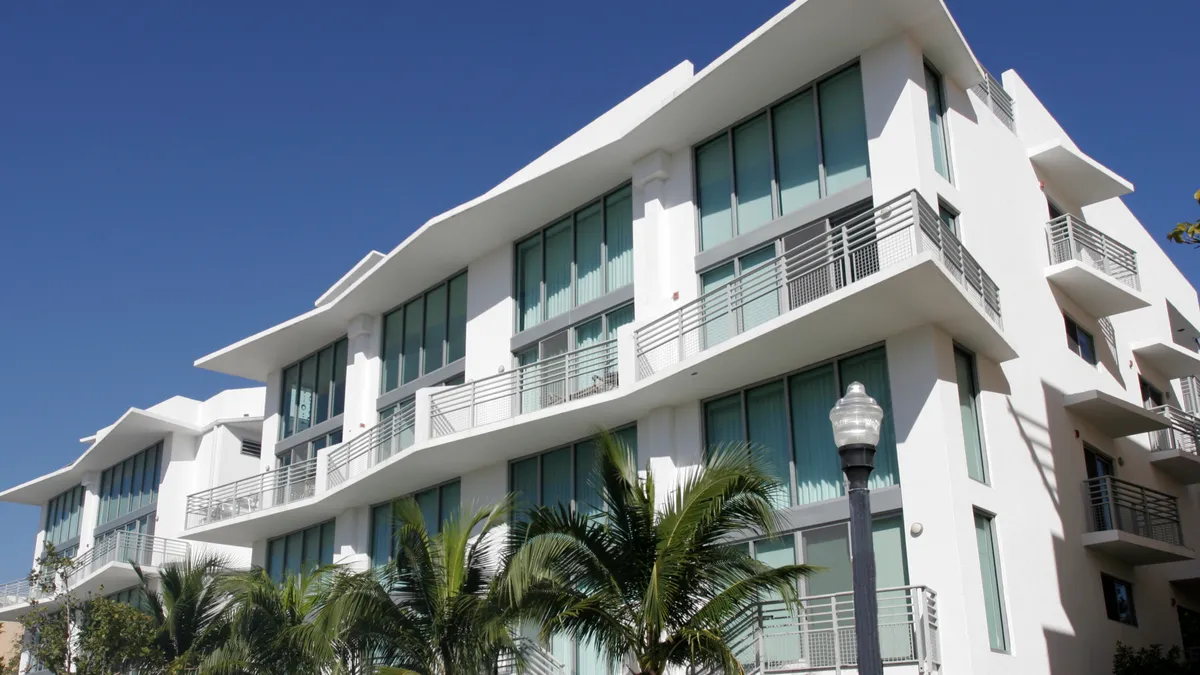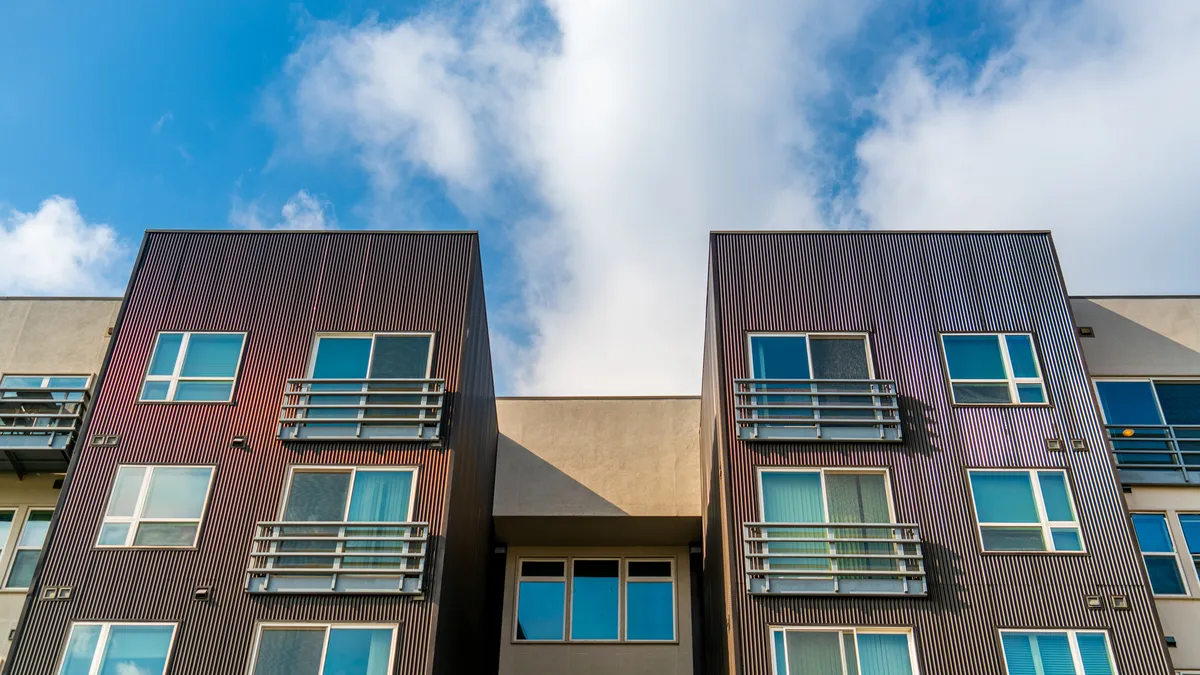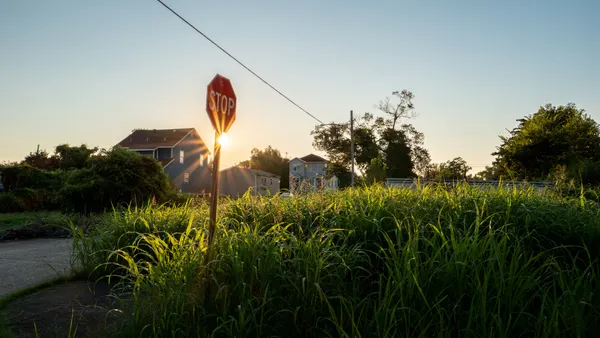Dive Brief:
- For the first time in seven months, the national average rent rose slightly, up $1 to $1,713 in February, according to Yardi Matrix’s latest Multifamily National Report. Year-over-year rent growth remained unchanged at 0.6%.
- Northeast and Midwest rent performance remained strong, with New York City leading the major metros at 5.4% YOY rent growth and 0.6% growth for the month of February. However, rents in Sun Belt markets are beginning to fall back after years of strong performance, given a surge of new supply.
- The national average rent has now fallen back to the same level it was 18 months ago. This reflects a number of shifting trends in the market, including an unusually high number of deliveries, which are expected to fall off in the coming years, according to Yardi.
Dive Insight:
While demand for new apartments has remained steady, the pace of new apartment deliveries — another 1 million units are expected to come online by the end of 2025 — has put a damper on occupancy overall. The national occupancy rate fell 60 basis points YOY to 94.5% in January, after peaking at 96.2% in late 2021, and Yardi expects this number to fall further.
High rent growth in New York and New Jersey is fueled by a strong economy, high wages and a surge of immigration over the past two years, according to Yardi. While this area has some of the highest rents in the country, peaking at $4,829 in Manhattan, it also has a relatively low rent-to-income ratio. Meanwhile, despite falling occupancy, Columbus, Ohio; Kansas City, Missouri; and Indianapolis are seeing moderate rent growth that still falls below the national average.
| Market | YOY rent growth, February 2024 | YOY rent growth, January 2024 | Difference |
|---|---|---|---|
| New York City | 5.4% | 5.5% | -0.1 |
| New Jersey | 3.8% | 4.4% | -0.6 |
| Columbus, Ohio | 3.6% | 4.2% | -0.6 |
| Kansas City, Missouri | 3.3% | 3.4% | -0.1 |
| Chicago | 3.1% | 2.9% | 0.2 |
| Indianapolis | 3.0% | 3.0% | 0 |
| Washington, D.C. | 2.8% | 1.9% | 0.9 |
| Boston | 2.8% | 2.6% | 0.2 |
| Twin Cities | 2.1% | 2.1% | 0 |
| Philadelphia | 2.0% | 1.5% | 0.5 |
SOURCE: Yardi Matrix
After several years at the top of the rent growth charts, the most active Sun Belt and Southwest markets — including Charlotte, North Carolina; Tampa, Florida; Austin, Texas; and Phoenix — are seeing low or negative rent growth. Austin’s rent growth peaked at 24.0% in February 2022, but has now fallen into the negatives at -6.2%, the lowest of the major metros, according to the report.
Nashville, Tennessee; Orlando, Florida; Raleigh, North Carolina; Charlotte; and Austin have all added more than 4.0% to their total apartment stock in the last 12 months and have also experienced negative rent growth during the same period. Many of these markets have much more inventory yet to come — Austin’s pipeline stands at 64,000 units, while Charlotte has 37,000.
Despite this negative growth, demand for apartments in these markets is still strong, as is absorption.
“Economic and population growth is the lifeblood of multifamily,” reads the Yardi report. “While high-demand markets are likely to record weak rent growth over the next year or two, the seeds of a rebound have been planted, as starts are declining and deliveries will drop in 2026 and 2027.”











